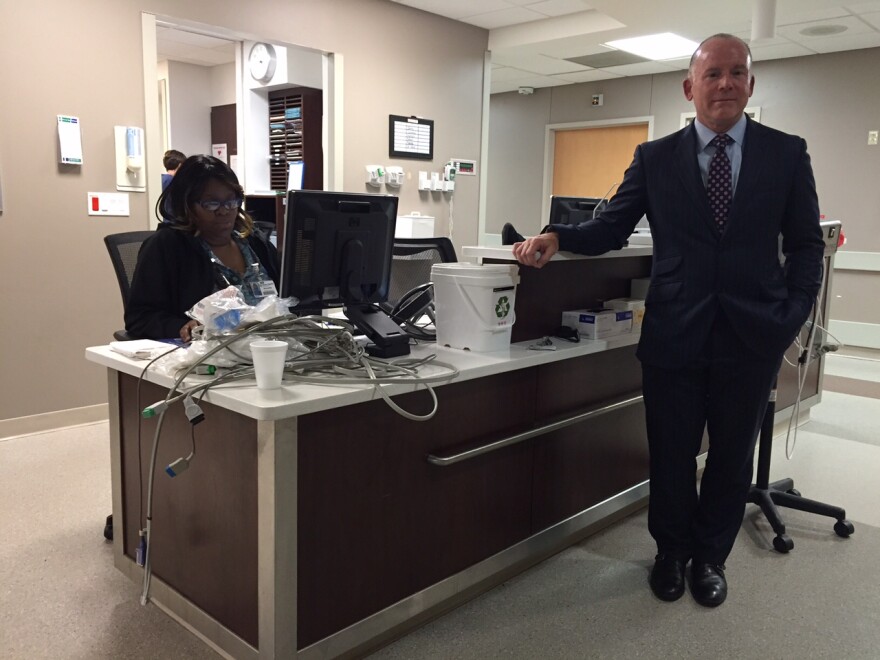A year after Ebola arrived in Dallas, it might seem like hospitals and clinics are back to normal – except for the leftover hand sanitizer pumps and the occasional sign warning about international travel.
But, underneath the surface, there are larger shifts in health care in how nurses and doctors work together, and how hospitals are preparing for whatever is the next Ebola.
That’s one of the many lessons learned after Dallas faced an unprecedented public health scare in the fall of 2014. KERA is exploring those lessons – and taking a deeper look into what happened last year – in a new series called Surviving Ebola.
Explore the KERA digital project here. There’s a timeline of Ebola-related events, voices of those most affected by the virus, and much more.
The first story in the series focuses on where Ebola began in the U.S. — the room at Texas Health Presbyterian’s emergency department where Thomas Eric Duncan lay sick with Ebola.
Even though it’s been one year since Duncan was in this room, the stigma is so strong the hospital doesn’t want to reveal the room number.
Once again, in the tug of war between fear and science, emotion pulls harder.
Dr. Daniel Varga, chief clinical officer at Texas Health Resources, said even though staff was aware of Ebola in 2014, no one thought it would happen in Dallas.
“We believe we were very well attuned to the potential risk of Ebola, and that we had communicated that fairly aggressively,” Varga said. “What we didn’t do is train and simulate for that.”
Read the rest of the story here. And explore the rest of the Surviving Ebola series here.
Surviving Ebola, a one-hour KERA News special, airs Sept. 30 at 2 p.m. and Oct. 2 at 7 p.m. on KERA 90.1 FM.







